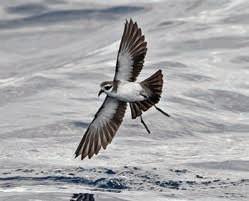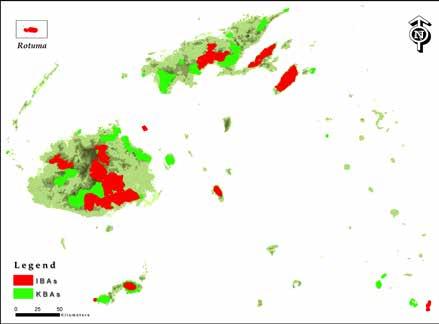
13 minute read
Threatened Birds
StAtE PROTECTED aREaS
FIgurE 5: FIjI’S IBAs And KBAs
Advertisement
The IBAs cover about 17% of Fiji’s land area and about 40% of the country’s remaining forest. These are mostly in the largest areas of natural forest on the main islands (Viti Levu, Vanua Levu, Taveuni, Kadavu and Gau) plus two small islands which each support a specific threatened bird (Rotuma, Ogea), and Vatuira, which supports an important seabird nesting colony.
Although designation as an IBA provides no official protected status, it highlights the area as particularly important to birds and encourages opportunities for conservation. In addition to IBAs, Fiji has identified Key Biodiversity Areas that are also places of international importance for the conservation of biodiversity identified nationally using simple, standard criteria, based on their importance in maintaining species populations.
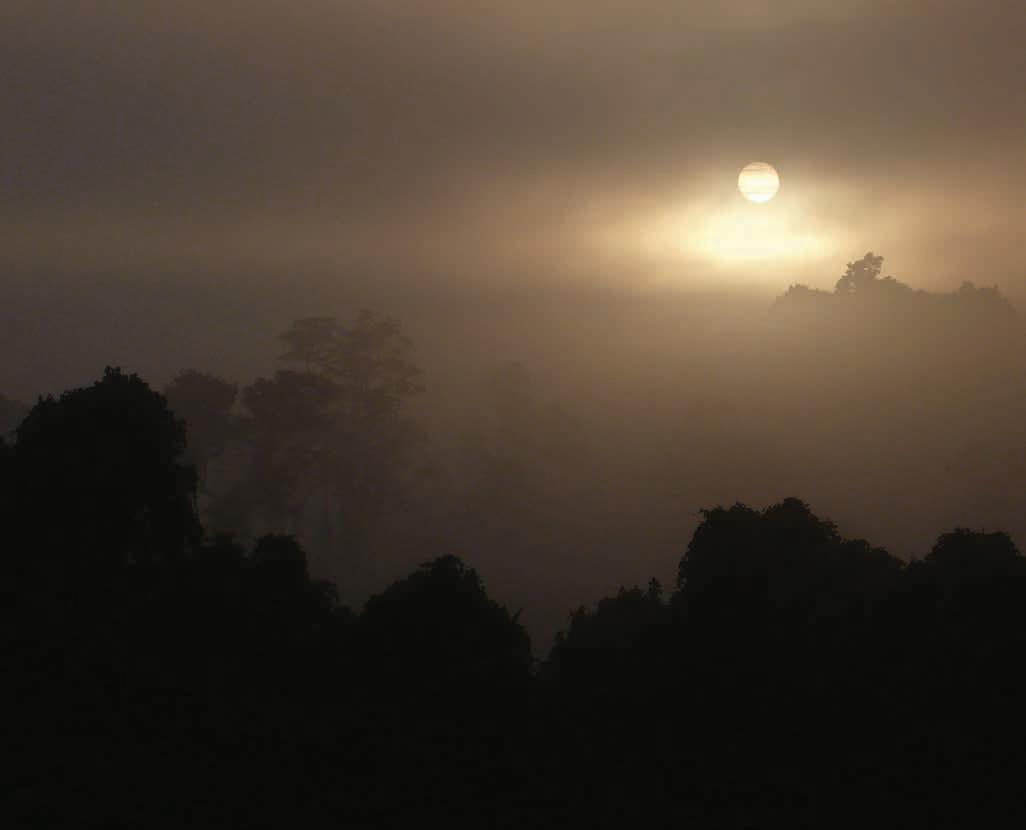
As the building-blocks for designing the ecosystem approach and maintaining effective ecological networks, KBAs and IBAs are the starting-point for conservation planning at the landscape level.
right: Early morning forest, viti Levu © Jörg Kretzschmar.
FOREST
PrESSurE PROTECTED aREaS
Korobasabasaga range, viti Levu, recently excised from the Sovi Basin conservation Area for mining purposes © dick Watling.
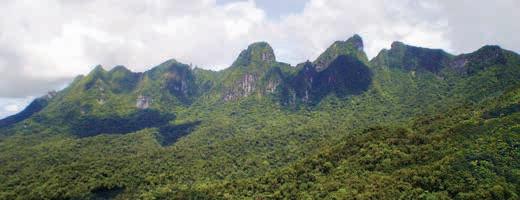
Because of the nature of communal land ownership in Fiji, there will always be challenges in achieving a representative system of protected areas, as most landowners will understandably require the greatest immediate monetary return for any land use they choose for their property. So it must be recognised that the potential for
SovI BASIn undEr thrEAt
The Sovi Basin Conservation Area is generally regarded as Fiji’s most important biodiversity conservation area and the last wilderness area on Viti Levu. It was first formally recommended as a Protected
Area in 1988 and is now listed on the
World Heritage Tentative List. As a result of over 25 years of commitment by many stakeholders, active work, research, surveys and consultation with the landowning communities of the Sovi Basin Conservation ‘traditional’ national parks and protected areas in Fiji is extremely limited.
Even when this is possible, protection cannot be guaranteed, as the establishment of the Sovi
Basin Conservation Area has shown. Area, 99% of its landowners signed a consent to lease their land to the National Trust of Fiji for the purpose of conservation. The area was formally leased to the National Trust of Fiji in early 2011. However, the intervention of the Namosi Joint Venture Mining Project resulted in the environmentally fragile and important Wainavadu catchment of the Sovi Basin Conservation Area being excised as a waste dump for the mine, even before an Environmental Impact Assessment was considered.
rESPonSE PROTECTED aREaS
ProtEctIon oF KEy SItES Fiji has a well developed system of Key Biodiversity Areas (including Important Bird Areas) identified and some of these are prioritised for formal protection in the National Biodiversity Strategy and Action Plan.
On Taveuni, Fiji’s conservation stronghold, NatureFiji-MareqetiViti is working with the landowners, Forests department and the Provincial Office to develop the existing Forest Reserve – a site with great potential for World Heritage status – into the Taveuni National Park. The intention is to facilitate greater potential benefits to the landowners and provide tourism to Taveuni with a significant additional attraction.
Closer to Suva and on a smaller scale, a proposal to establish the Wainikavika National Park has been submitted to Government to extend the Garrick Memorial Reserve to include a scenic reservoir and its forest surround as a recreation site for Suva’s growing population.
As noted above, the potential for ‘traditional protected areas’ in Fiji is limited because of the prevailing tenure and landowners’ justifiable aspirations. As such, the future for the protection of Fiji’s quite extensive forest resources lies in fostering stewardship of the forest by landowners without alienating the land.
Much more work needs to be done to identify innovative methods of rewarding landowners for positive forest custodianship instead of subsidising or encouraging forest conversion. Payments for ecosystem services, REdd + arrangements and Permanent Forest Estates are all being looked at by various agencies, conservation organisations and landowner groups to develop progressive modes of forest protection and/or sustainable management. The foundation lies in better sustainable landuse planning. Community-based land use and management plans have great potential to assist landowners to identify and implement the most productive use for their lands.
communIty-BASEd ProtEctEd ArEAS Following identification of IBAs, BirdLife International and its partners have initiated work with landowner and other communities at some of the IBAs with the intention of focusing on:
• Conservation action on the ground
• Advocacy for action by other stakeholders
• Monitoring conservation status change – birds and habitat
• Revision of institutional and supporting frameworks if necessary
• Sustainable finance to support these activities
NatureFiji-MareqetiViti has initiated work with several landowners to begin conserving sites for threatened species. These include the Collared Petrel in Gau, the Fiji Mastiff Bat at its only known roosting cave at Nakanacagi on Vanua Levu, and the Fiji Sago Palm at Culanuku, Serua.
right: Qarani community members installing an artificial nest box for collared Petrel © Eleazar O’Connor. SISI InItIAtIvE
The Sisi Initiative is a BirdLife Fiji project named after the Silktail Lamprolia victoriae, which is found only on Taveuni and on the Natewa Tunuloa Peninsula on Fiji’s secondlargest island of Vanua Levu.
The Natewa Peninsula is one of Fiji’s 14 Important Bird Areas. However, the bird’s old-growth rainforest habitat is being encroached upon by forces such as illegal logging, forest fires, overgrazing, agricultural expansion and the spread of invasive species. coLLArEd PEtrEL coLony, SAvALEvu, gAu In response to these threats, the Sisi group has been working with communities to wisely use and manage their natural resources in order to conserve the endemic bird, while at the same time improving their own way of life.
Actively managing more than 6000 hectares (almost 15,000 acres) of forest, six villages are turning to income-generating activities that are compatible with conservation, including beekeeping, jewelry manufacture
and ecotourism.
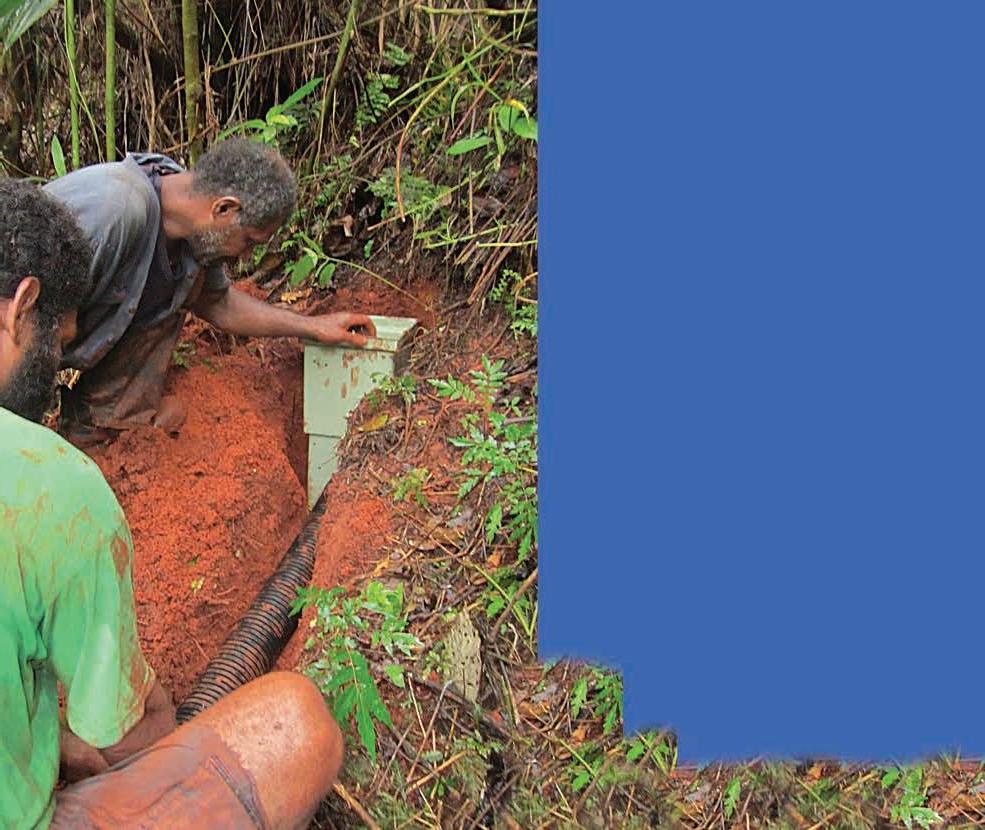
collared Petrel Pterodroma brevipes © Mark Fraser. The first-ever nesting colony of the Collared Petrel was found at Savalevu, in the forest above Navukailagi, Gau, by landowners and NatureFiji-MareqetiViti’s Fiji Petrel Project. The colony comprises more than 25 nesting burrows but is suffering from severe feral cat predation. The landowners have announced to the Gau Island Council that they wish to protect the area and the Fiji Petrel Project is now working with the landowners to control rats and feral cats. Consultations will be undertaken for the preparation of a management plan and an appropriate form of protection.
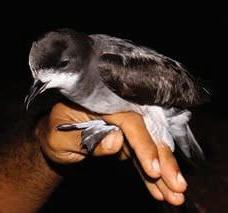
StAtE THE ImPORTaNCE OF FOREST
Over 99% of Fiji’s endemic biodiversity is found in the nation’s native forests. This is because originally Fiji was all but completely forested, so its native landbirds and biodiversity evolved as forest species.
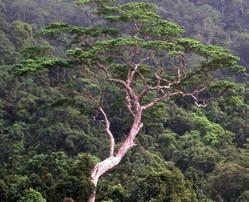
Any conversion of forest in Fiji may easily result in the world extinction of a plant or animal species, so it represents the greatest threat to birds and Fiji’s terrestrial biodiversity.
Birds demonstrate this dependence on forest very well. There are 35 native landbird species (excluding ground and waterbirds) on Viti Levu and only two of these are not found in forest. Although they all fly well, only 17 of them might be seen in open, agricultural habitats and only 12 in suburban gardens.
Forest varies with rainfall from semi-deciduous dry forest in lowland rain-shadows, to wet rainforest at higher altitudes facing the prevailing southeasterly winds. Lowland rainforest extends up to about 600-800m where it grades into montane rainforest, and cloud forest on the most exposed ridges and peaks. Little dry forest remains as it is much easier to clear, is more susceptible to fire and drier areas are preferred for habitation. Many coasts have a very narrow band of littoral forest, with extensive stands of mangroves in some leeward and estuarine areas. Most of Fiji’s forest birds are found in all forest types, but some are restricted to wetter forest, which is also much richer in plant diversity.
Relatively large areas of forest are required if we are to ensure the survival of our endemic forest biodiversity. This is readily understood in the aftermath of a major cyclone such as TC Evan in december 2012, where extensive forest areas can be badly damaged. Birds are more fortunate than other groups and if they are able to survive the carnage, they can fly and some will find refuge in less damaged forest some distance away. As the forest recovers, so they can migrate back into the recuperating area.
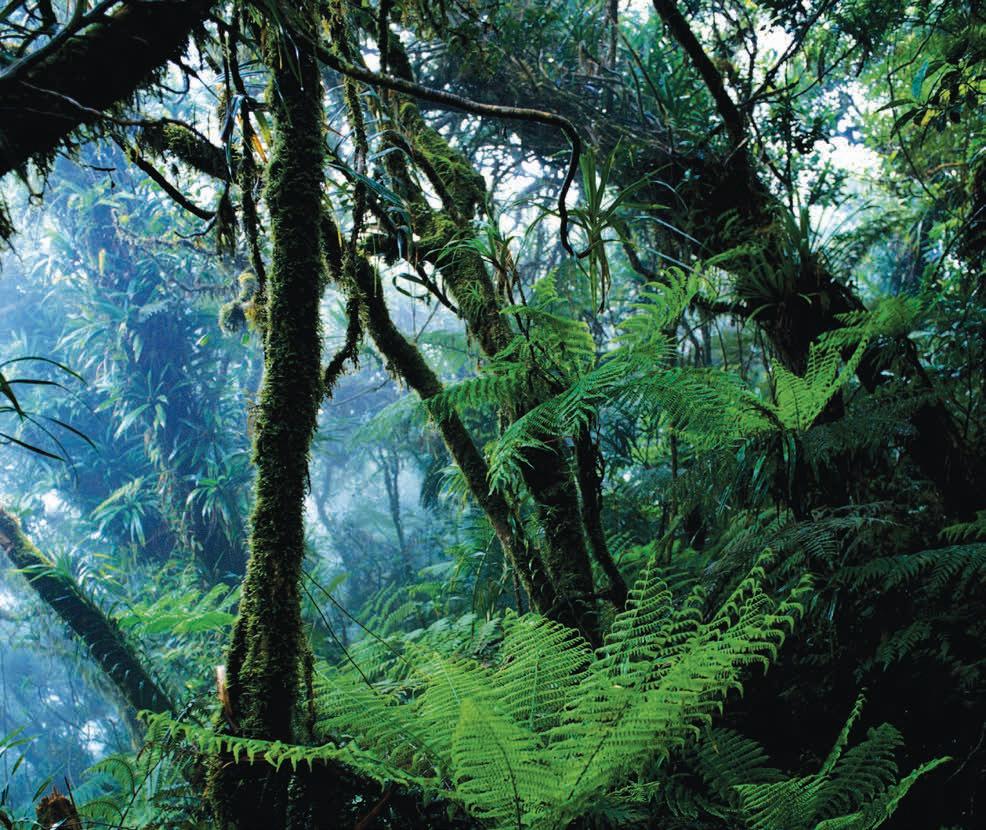
For trees and other plants, this process of recolonisation of cyclone-ravaged tracts takes much longer.
At stake however, is the need to have extensive areas of forest, some of which can remain undamaged during even the most damaging cyclone.
Above: Kauvula Endospermum macrophyllum © Jörg Kretzschmar. right: mt tomaniivi cloud forest © Stuart Chape.
PrESSurE THE ImPORTaNCE OF FOREST
Just over 50% of Fiji’s land area, formerly covered by forest, has been converted to grassland or agricultural crops. The rate of forest loss has declined in recent years, although a recent comparison indicates that there continues to be an increase in the extent of Open Forest at the expense of Closed forest (Figure 6).
This recorded decline in the extent of closed forest represents a reduction of 7000ha per year.
The loss of forest is ongoing and the conversion of 45,000 ha of mahogany plantation (1970-80s) from high quality native forest was a devastating blow to Fiji’s endemic birds and other forest biodiversity, especially when there existed a large area of degraded forest where the plantations could and should have been located.
Fire remains the most serious ultimate cause of forest loss and the prevalent attitude to wildfire in Fiji is casual. Adoption of a positive stewardship attitude to our forest resources is a national priority and a major element of this will need to be the control of wildfire.
The influence of forest quality on birds is poorly known. Ornithologist Mere Valu studied forest birds near Suva. She focused on a subset of forest birds that are all able to persist in the face of disruption, and found that the identified changes in behaviour confirm that logging can have subtle effects on forest birds’ ecology and behaviour, and that these changes can be measured even eight years after logging has ceased. Although the interim implications of the change in behaviour observed between the two habitat types remain unknown, the observations highlight the importance of maintaining Fiji’s undisturbed tracts of forest for the future integrity of tropical ecosystems. (Tabudravu 2009)
ES ) ct A r (1000 h E A r EA t or ES F FIgurE 6: chAngE In thE ExtEnt oF ForESt tyPES In FIjI BEtWEEn 1991 And 2007.
800
600
400
200
0
1991
data from FrA 2010 – country report, Fiji 2007 Closed Forest
Open Forest
Pine Production Hardwood Plantation Coconut Plantation
rESPonSE THE ImPORTaNCE OF FOREST
Maintaining Fiji’s forest cover is the key to protecting all of its endemic birds as well as its other terrestrial biodiversity. As such, the priority land areas currently identified for protection in the National Biodiversity Strategy and Action Plan are all forest areas. However, conservation of viable and healthy populations of birds requires more than the establishment of a few statutory Protected Areas that cover only a small portion of the landscape; it needs conservation in the ‘working’ landscape. A new Forest Policy for Fiji was adopted in 2007 after extensive nationwide consultation. One of its key provisions intended to safeguard the forest sector is the need to establish a national Permanent Forest Estate. The key objective of the Permanent Forest Estate is to replace the ad hoc logging of recent years and the incremental loss of productive forest through unplanned and unsustainable agriculture, with an area that will enable sustainable forest management and conserve all the attributes of Fiji’s significant forest resources.
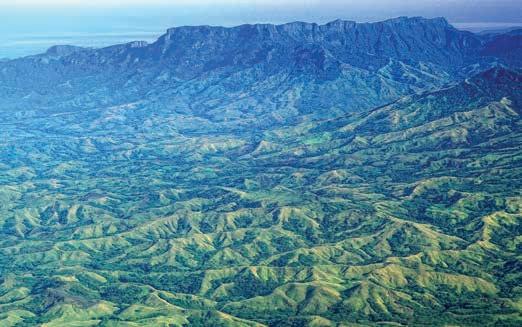
The Forests department, with assistance from NatureFiji-MareqetiViti, is undertaking an awareness campaign of the Permanent Forest Estate provision amongst forest landowners and registering those who indicate their interest.
Above: deforested, fire-climax grassland hills in west viti Levu © Stuart Chape. right: habitats of endemic birds like the many-coloured Fruit dove are threatened by unsustainable logging © Jörg Kretzschmar. ForESt conSErvAtIon: thE WAy ForWArd Traditionally and to a large extent currently, landowners had few if any options for benefiting financially from protecting their forests. Government and the private sector generally encouraged landowners to log their forests without ensuring sustainability, or convert to mahogany, cocoa or coconut plantations, or fell their forest for agricultural crops. Conservation of forests has been regarded as a beneficial land use, but the benefits accrue largely to the public in free ecosystem services without any monetary benefits accruing to the landowners.
The future for forest protection in Fiji lies in rectifying these anomalies. Forest custodianship or conservation needs to be a recognised land use and the landowners should benefit financially as a result. Innovation is required in enabling forest owners to benefit from wise stewardship of their forests rather than expecting this to happen only through ad hoc logging or a variety of conversion options.
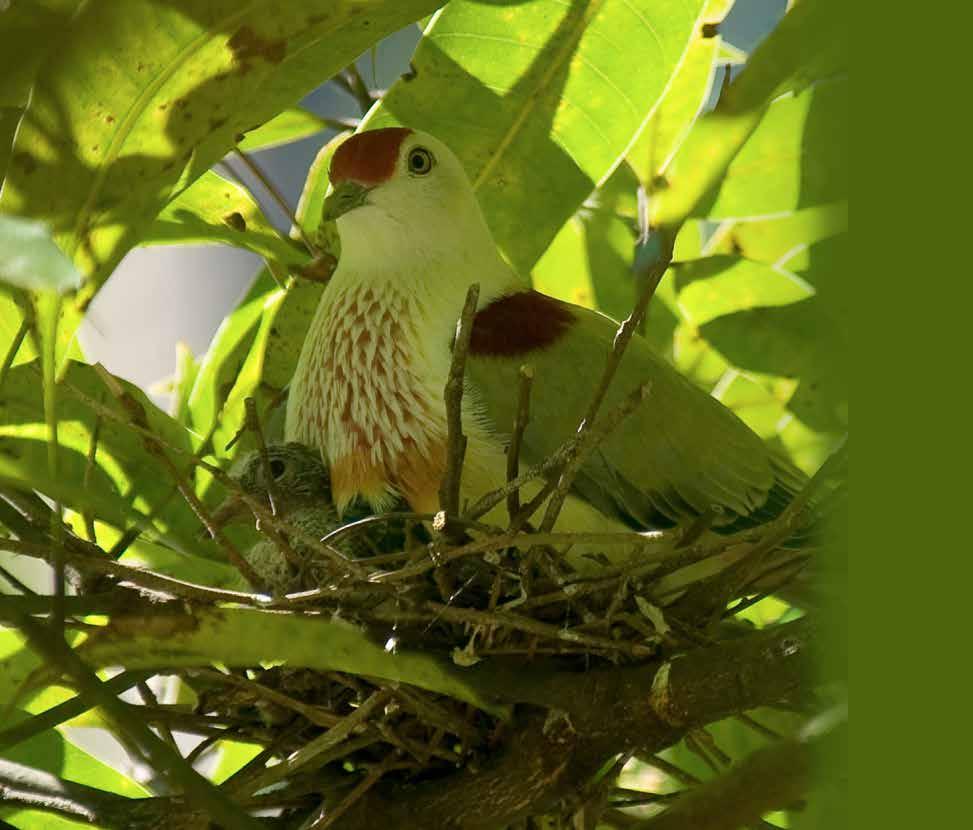
Forest harvesting needs to be undertaken on a sustainable basis. Forest conversion schemes should be prohibited and plantations established in open or degraded forest areas. Ecosystem services need to be fully costed and paid for. National biodiversity conservation needs should be recognised as a land use and the forest owners should be advantaged accordingly.
StAtE SEaBIRDS aND SHOREBIRDS
nesting colony of Sooty tern Sterna fuscata © Steve Cranwell.
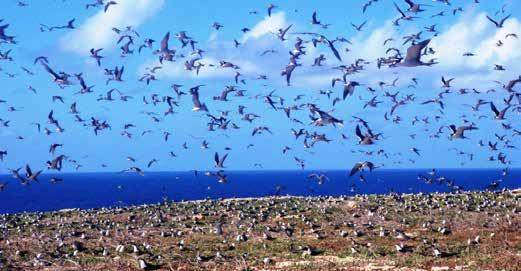
Migrant shorebirds and voyaging seabirds are a distinctive and culturally important component of the Fijian avifauna. In September each year, the Bar-tailed Godwits arrive at Suva Point. As far as we know, they fly direct from Alaska to Suva, a non-stop journey of eight to nine days. Some fly direct from Alaska to New Zealand, an 11-day non-stop flight. The migrations that our dilio (Pacific Golden Plover), Bar-tailed Godwits and other shorebirds undertake twice a year are marvels of the natural world.
Similarly, when a young Kacaunigau (Fiji Petrel) leaves its burrow somewhere in the forest near delaco on Gau, there will be no parents watching over it. Instinct dictates it flies out to the sea and then, we believe, due south to cooler temperate waters. It will not return to Gau or visit any other land for three to four years, and when it does so, it will likely return direct to its nesting burrow. This is yet another marvel of nature.
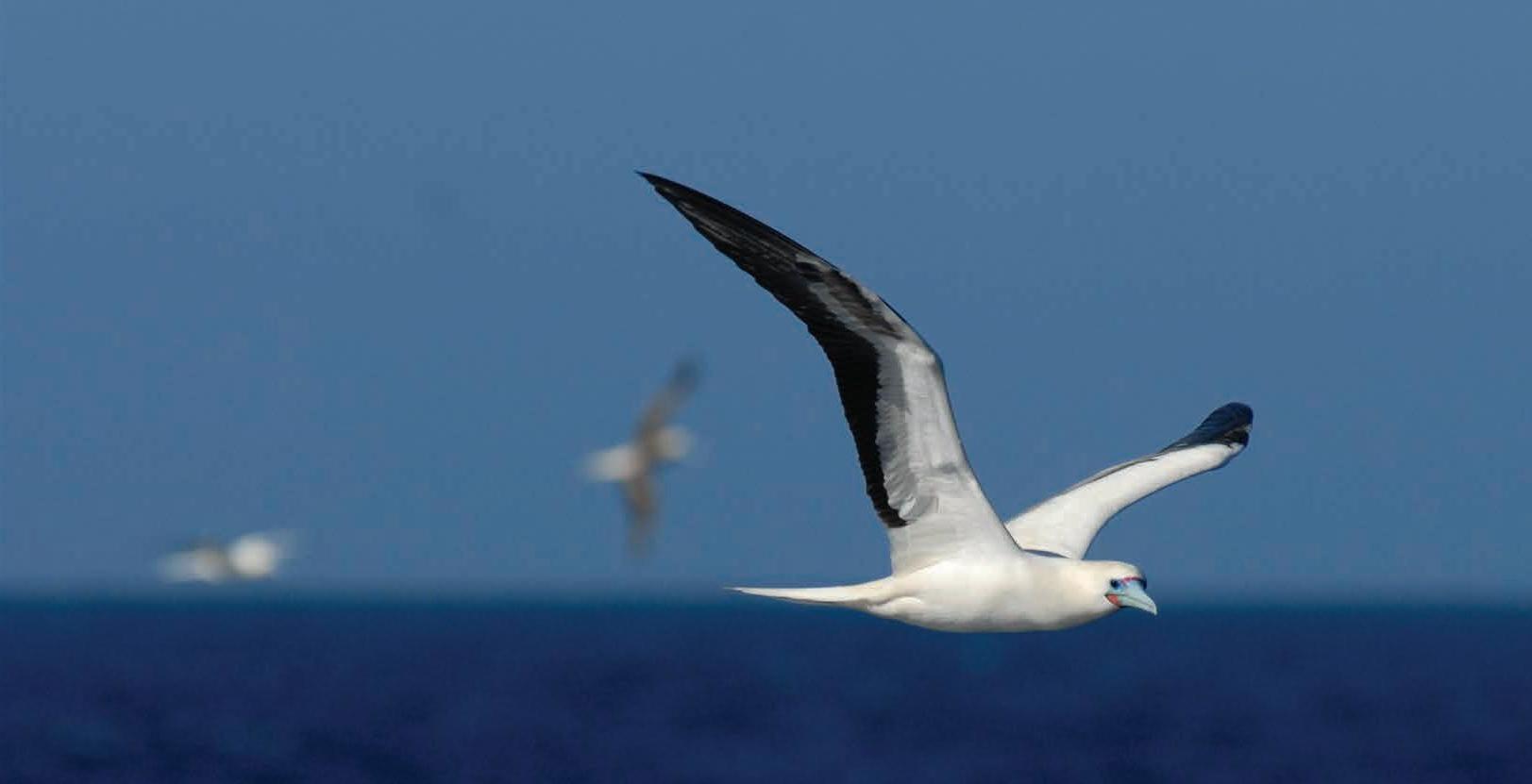
Prior to human settlement, all the islands of Fiji are believed to have supported very high densities of nesting seabirds that functioned as major ecosystem drivers by transporting nutrients from the ocean to land and by cultivating soil with their burrowing.
Following human settlements, seabirds have provided benefits such as food, feathers and nutrients for farming (seabird guano). Some of our seabirds were key to the navigating prowess of the Pacific’s first voyagers, while today seafarers still use seabirds for locating schools of fish. Seabirds evolved in Oceania in the absence of mammalian predators and as a result are extremely vulnerable when they become established. They are especially vulnerable to the presence of humans. The numbers and distribution of breeding seabirds in Oceania today is a vestige of what it was prior to the coming of man.
In Fiji, seabirds are believed to be declining. What we are sure of is that there is an almost universal lack of information to reliably assess their condition. At present we know little more than which species still breed in Fiji and where the main breeding colonies are, although we know these are confined to remote, relatively undisturbed sites. We have no information on how they are faring.

Above: White-faced Storm Petrel © jörg Kretzschmar. Left: red-footed Booby Sula sula © jörg Kretzschmar.
